What is Ischemia?
Ischemia is a clinical condition in which the blood flow to vital organs gets reduced or restricted. Depending on the organ, the condition may be called cardiac ischemia, kidney ischemia, or brain ischemia. In babies, when the blood does not adequately flow to the brain in the prenatal or neonatal stage, it is known as infant brain ischemia.

Blood is the carrier of oxygen and other essential nutrients to the brain cells. When the blood supply to the baby’s brain is interrupted, the oxygen deficiency can result in improper brain function leading to developmental delays. If the ischemic condition continues for long, the infant may suffer a birth injury resulting in permanent brain damage.
In the event of a complete obstruction or partial constriction of oxygenated blood flow that supports the metabolic processes in the brain, the baby experiences cerebral anoxia or hypoxia. When this occurs during the labor and delivery process, birth or shortly after birth (in the neonatal period) doctors and nurses have a short window of time within which they must act to restore the oxygen flow. Failing this, the baby will experience a cascade of ischemic events in the brain, which ultimately lead to cerebral tissue death. Additional damage to other vital organs, such as the heart, liver and kidneys may also occur in many cases.
Hypoxic Ischemic Encephalopathy (HIE) and Hypoxia-Ischemia (HI) Injury
Infant brain ischemia, clinically known as neonatal hypoxia-ischemia (HI), is completely preventable in most cases. Neonatal HI injury is clinically defined as stoppage of the umbilical blood flow to the fetus at a gestational age of 36 weeks or above, including during the neonatal period after birth. Neonatal Ischemia continues to be the predominant cause of disability and death in infants, and is also commonly associated with lasting cognitive, sensory, and motor impairment in children including cerebral palsy.
When a baby suffers brain damage from ischemia prior to birth and shortly thereafter, the birth injury causes a brain condition known as hypoxic ischemic encephalopathy (HIE). The leading cause of cerebral palsy is HIE. Babies born with HIE have a high incidence of developmental delay and cognitive disability.
Neonatal HI is responsible for nearly one in four infant deaths worldwide. Children who survive the neonatal brain ischemic injury typically have a high rate of permanent disability. Research shows that among the infants who survived neonatal HI, up to 10% suffer from lasting motor disabilities, and up to 50% sustain cognitive or sensory deficits that continue to adolescence. A 7-study meta-analysis of 386 babies showed the following outcomes:
- 5.9% of the infants died
- 17.2% suffered neurological abnormalities
- 16.3% experienced neonatal seizures
- 14.2% qualified for a cerebral palsy diagnosis

Motor, sensory, and cognitive disorders resulting from infant brain ischemia include seizures, vision and hearing impairment, muscle spasticity, microcephaly (abnormally small head), language disorders, and learning disorders.
Signs and Symptoms of Infant Brain Ischemia
If a baby suffers an ischemic event prior to birth—during labor and delivery---the baby will have certain physiological responses that doctors (obstetricians), mid-wives and nurses can see that will enable them to respond to stop the ischemic event. These include:
- Fetal Distress
- Bradycardia
- Decelerations including recurrent late and variable
- Loss of Fetal Heart Rate variability
- Decreased fetal movement
- Abnormal Biophysical Profile
- Abnormal Nonstress Test
During an ischemic event after birth, as the infant’s brain begins to shut down because of oxygen starvation, various body organs start getting affected. Brain ischemia symptoms in babies can look similar to those suffering a stroke, and may include:
- Seizures
- Dizziness
- Loss of coordination
- Vertigo (inner ear and brain miscommunication)
- Vision or hearing impairment
- Feeble crying or no crying
- Fatigue and muscular lethargy
- Weakness in the entire body or certain body parts
- Loss of movement in the limbs
- Unconsciousness
Long-term Effects of Infant Brain Ischemia
Children who survive brain ischemia may experience serious disorders and development lapses (akin to an adult that survived a stroke) after the ischemic event is over. The actual impact will vary depending on the duration of ischemia and the area of the brain that suffered damage. Moreover, some of the following effects may start manifesting soon after birth:
- Epilepsy
- Traumatic brain injury
- Personality and mood disorders
- Lowered IQ
- Delays in the attainment of infant developmental milestones
- Cognitive impairment in comparison to peers
- Notable impairment of motor function
- Cerebral palsy
Types of Cerebral Ischemia causing Birth Injury and HIE
Researchers have classified infant cerebral ischemia into two categories, depending on the ischemia’s relative distribution. These include:
Focal Brain Ischemia
This occurs when a blood vessel in the brain gets blocked usually due to a blood clot. Focal brain ischemia restricts the blood flow to a specific area of the brain, leading to an increased risk of brain tissue death in that location. This type of cerebral ischemia may be caused because of the development of thrombosis (localized blood coagulation) or severe thromboembolic complications (when a piece of the blood clot breaks off and causes obstruction.)
Global Brain Ischemia
When the flow of oxygenated blood is temporarily restricted but restored quickly with medical resuscitation, it would be treated as transient ischemia. Symptoms in this case may last only briefly. If the oxygenation to the baby’s brain is not restored for a longer time period, it may result in a hypoxic state of global brain ischemia. This generally causes widespread damage to the white matter of the brain. If the ischemia so great that it results in complete restriction of the oxygen to the brain, an anoxic brain injury occurs usually resulting in damage to the grey matter of the brain.
In either case, the infant may suffer permanent brain damage or death. Reperfusion therapy and hypothermia therapy (“cooling”) may be instituted to preserve maximum brain tissue.
Hypothermia Therapy: The therapy involves cooling the baby’s core temperature to around 92.3 degrees Fahrenheit. After 72 hours, medical staff begin to gradually rewarm the baby while simultaneously monitoring the baby’s vital signs. Cooling or rewarming too quickly can harm the baby’s brain and other organs.
Reperfusion Therapy: a medical treatment to restore blood flow, either through or around, blocked arteries, typically after a heart attack (myocardial infarction (MI)). Reperfusion therapy includes drugs and surgery. The drugs are thrombolytics and fibrinolytics used in a process called thrombolysis.
What Causes Fetal and Infant Cerebral Ischemia?

According to the National Institutes of Health (NIH), cerebral ischemia injuries (including HIE) newborns often originate from fetal distress during labor leading to a birth injury, particularly when both baby and mother have a higher risk of complications. Other causes may range from viruses to hereditary factors to the mother’s lifestyle choices. A family history of compromised immune systems, neurological disorders, and congenital abnormalities may also contribute to a higher risk of infant brain ischemia.
Some of the known causes and risk factors of infant cerebral ischemia prior to and shortly after birth include:
- Oxygen deprivation during birth
- Uterine rupture including during a VBAC delivery
- Complications of the umbilical cord
- Placental abruptions
- Blood vessel compression during birth
- Preeclampsia (maternal high blood pressure)
- Infections, such as chickenpox or meningitis
- Prolonged or Arrested labor
- Blood clotting disorder in the infant and the mother
- Prolonged or distressed labor
- Preterm delivery before full in-utero lung development
- Congenital heart defect
- Neonatal Hypoglycemia
- Mistakes during Neonatal Resuscitation
- Failure to provide Hypothermia (“Cooling”) Therapy
- Meconium Aspiration Syndrome (MAS)
- Gestational diabetes
- Maternal hypotension causing insufficiency of infant brain oxygenation
The extent of lasting infant brain damage during the period of oxygen deprivation will ultimately depend on the particular area of the brain that sustained the maximum cellular deterioration and death of the neurons following the anoxic condition.
Diagnostic Tests to Determine Infant Brain Ischemia
In a suspected case of infant brain ischemia, the medical providers will usually require a series of tests to scan the brain for tumors, lesions, or other signs that indicate an ischemic condition. Other body parts may also be evaluated to check for potential abnormalities.
The diagnostic criteria for infant hypoxia ischemia are generally based on the following set of markers:
- APGAR Scores: The 5-minute Apgar score is usually below 5. But not all APGAR scores are correctly calculated or recorded
- Whether the baby requires neonatal resuscitation including intubation to provide mechanical ventilation and CPR.
- Metabolic Acidosis from arterial blood gases drawn from the baby at birth
- Absence of sucking reflex, hypotonic muscles, or other abnormal neurological indicators
- Abnormal MRI findings prior to any hypothermia therapy
Structural Imaging Tests to Evaluate the Baby’s Neuroanatomy for HIE from Ischemia

Structural imaging tests can show cerebral damage (HIE) that has occurred prior to, at or shortly after birth in newborns that survive the initial hypoxic-ischemic insult. Magnetic Resonance Imaging (MRI) test will usually detect injury to the:
- Thalamus: part of the brain that relays the motor and sensory signals to the brain
- Basal ganglia: brain nuclei responsible for motor control, executive functions, and emotions
- Cerebral cortex: the “grey matter” involved in complex brain functions, such as information processing and language ability
- White Matter: is the surface area of the brain and damage can result when ischemia is due to prolonged hypoxia vs. a sudden (acute) and complete restriction of the blood flow.
In other words, there is no single region of the brain that might suffer specific damage due to an ischemic event.
MRI
To investigate the neonatal brain anatomy, diffusion-weighted MRI imaging (DWI) may be a more reliable technique. It can determine the time of the brain lesion onset. (DWI can sensitively measure the mobility of water molecules in the brain tissue, known as Brownian movement.)
Changes in the basal ganglia lesions in the first few days after birth can be detected with sequential MRI imaging. If the white matter diffusion in the brain appears asymmetric from the scan, it may be correlated with severe hemiparesis (partial paralysis or muscle weakness in one side of the body.)
Other Diagnostic Tools
Electroencephalography (EEG) has been shown to be a reliable predictor of neonatal HIE clinical outcomes. In particular, aEEG or amplitude-integrated EEG is a more effective technique. A vital EEG measure of neurodevelopment in infants is the Thompson score (or the HIE score). This measure comprises clinical symptoms associated with the dysfunction of the central nervous system (CNS). It helps assess the newborn’s status after birth asphyxia.
In the Thompson scoring system, 0 is considered the normal score, while 22 is the worst score, signifying most severe hypoxic ischemic encephalopathy (HIE) status.
Cranial ultrasound and magnetic resonance spectroscopy (MRS) are other useful clinical tools that help in understanding infant brain ischemia. MRS technique allows the real time imaging of the brain metabolism to identify processes that may be inhibiting brain activity.
How do the Brain Cells Die During Infant Brain Ischemia?
Following moderate or severe brain ischemia, the loss of brain tissue (brain cell death) in babies primarily occurs due to three pathways:
- Inflammation: Encephalitis resulting from viral infection or other causes
- Oxidative stress: A chemical process that results in the production of free radicals following a lack of oxygen supply to the brain
- Excitotoxicity: A phenomenon causing nerve cell death following pathologically high levels of glutamate (causing neurotoxicity)
Neonatal brain ischemia and hypoxic ischemic injury in babies is fundamentally different from the ischemic stroke seen in adults. A severe ischemic event in a baby’s brain (either before or shortly after birth) may cause a dissolution of the brain’s outermost basal tissue layer due to cell death. This may occur because the newly developed blood vessels in infants are fragile and are highly vulnerable to rupture. This is the not the case after an adult stroke.
Ischemic Injury May Occur in Phases

Injuries related to infant brain ischemia may evolve over time as follows:
- Primary phase: In the first few hours following the brain ischemic event, the MRI scan may detect only a subtle injury (restricted diffusion that starts as tiny lesions in the thalami and putamen.) Over the next three to four days, it tends to spread to more extensive regions of the brain.
- Secondary phase: In the days following the baby’s brain ischemic injury, a secondary injury phase may develop. This could lead to loss of cerebral autoregulation, MOMP or mitochondrial permeabilization (release of mitochondrial proteins that lead to death of brain cells), and neuroinflammation (inflammation of the nervous tissue).
- Tertiary phase: Following a hypoxic ischemic insult in the baby, active pathological processes of the brain may continue to take place for weeks, months or even years. This may cause persistent inflammatory damage and epigenetic changes (changes in the genetic makeup resulting from persistent behavioral changes).
Male babies are at a Greater Risk of HIE and Cerebral Palsy
Cohort studies have shown that near-term or full-term male babies are more vulnerable to ischemic or hypoxic-ischemic injury compared to females. Brain repair after an ischemic stroke in male infants is also relatively limited, contributing to a higher incidence of poor cognitive and motor outcomes in comparison to female infants with a similar injury.
Quantitative imaging results also reveal that preterm male infants are at a higher risk of white matter injury (white matter is found in the sub-cortical or deeper brain tissue, and is responsible for information transfer). On the other hand, preterm female infants are more prone to grey matter injury (grey matter is composed of the neuronal cells in the brain, responsible for speech, hearing, vision, emotions, decision making, and muscle control.)
Researchers are currently unable to explain the causes behind these sexual dimorphic outcomes in males and females as a consequence of infant brain ischemia. But this does not mean only male babies can suffer a birth injury leading to HIE or cerebral palsy. A female baby can suffer from fetal distress or any other event that leads to ischemia and also suffer a serious HIE injury resulting in lifelong complications even cerebral palsy.
Treatments for Infant Brain Ischemia
Treatment modalities will depend on the child’s age, severity of symptoms, and the underlying causes of the ischemic event and/or the ongoing condition. If the baby experiences seizures, the medical provider may prescribe anticonvulsant drugs to stop or limit their frequency.
Therapeutic hypothermia is currently used as one of the more effective, non-invasive treatments for infant brain ischemia. Hypothermia involves cooling the newborn’s body at a temperature of about 91.4°F for a continuous period of 72 hours. Research has shown that this treatment may mitigate the brain damage and the resulting neurological impairments, including fatality rates in the affected infants.
Stemming from this, therapeutic hypothermia alone may not suffice to prevent or reduce the effects of infant brain ischemia. The medical team must consider additional therapies that could be used in conjunction with it to achieve better outcomes.
Later in life babies suffering from an ischemic brain injury may receive physical therapy and occupational therapy. Occupational therapy teaches the child how to adapt to their condition and become independent as far as possible.
Additional strategies to address complications from an ischemic birth injury may include behavioral therapy, speech therapy, use of assistive devices, treatment for hearing or vision impairments, and educational interventions.
Treatments for Arterial Ischemic Stroke in Neonates
Arterial ischemic stroke is the most common form of neonatal stroke (or pediatric stroke). This may occur when the blood flow to the infant’s brain or spinal cord is obstructed due to a structural abnormality or a blood clot. Treatments in the early stages of the neonatal stroke can support the restoration of blood supply to the brain. The following treatments may be considered independently or as a combination:
Medical Therapy
The child may be administered anticoagulants (blood thinners) along with special vitamin supplements. Transfusion therapy or hydroxurea medication therapy may be given individually or in combination to the child. Anti-seizure drugs may be added to the therapy if the child is experiencing seizures. Clot removal drugs which are prescribed for adults are not approved for use in babies, but the medical team may consider this option in specific circumstances.
Interventional Neuroradiology
This treatment may be considered if the child has aneurysm (the blood vessel walls are weakened, causing them to bulge and burst) or arteriovenous malformation (abnormalities in blood vessels delivering oxygen to the brain). To repair the abnormal vessels, the medical provider will insert a catheter through the leg or arm, and guide it into the affected blood vessels in the brain.
Brain Surgery
In specific cases of pediatric stroke or certain other cerebrovascular disorders, a surgical procedure may be recommended. If the child suffers from severe swelling in the brain, a craniectomy may be performed to remove a portion of the bone. Other surgeries for pediatric stroke include removal of abnormal tissue in the brain, closure of abnormal blood vessels, or rerouting of blood vessels to feed the brain’s injured areas.
Is Your Child’s Brain Ischemia Birth Injury the Result of Medical Malpractice?
Parents whose children suffer from a birth injury causing brain ischemia deserve an answer to how their child developed this condition and whether it was preventable. Our dedicated birth injury lawyers want to help you find those answers.
If your child has been diagnosed with infant brain ischemia or HIE, and you suspect this may have been caused in part by medical mistakes, Miller Weisbrod Olesky will thoroughly investigate the facts and hold responsible medical providers accountable by pursuing medical malpractice claims against them. The compensation our clients receive helps them pay for their child’s current and future medical treatment, therapy, equipment needed to help cope with disabilities, and the other expenses associated with caring for a child with brain injuries, seizure disorders, organ damage, speech, vision, hearing or motor impairments, and cerebral palsy.
Sometimes families are hesitant to reach out to a medical malpractice attorney or law firm. Other parents feel overwhelmed by their circumstances and worried that they will not be able to help out in a lawsuit involving their child’s birth injury.
Miller Weisbrod Olesky is different from most law firms.
We provide help NOW.
Many attorneys focus only on pursuing their client’s legal case. At Miller Weisbrod Olesky, we know your child needs help today – not just when your birth injury lawsuit is settled. We have a team focused on helping our clients NOW when they need it most.
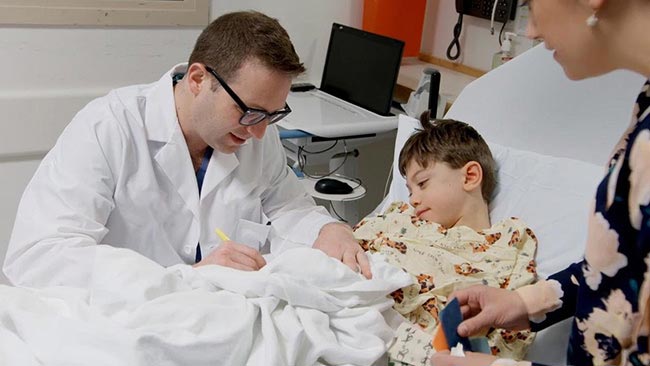
We know that children with birth injuries like hypoxic-ischemic encephalopathy (HIE) and cerebral palsy often require intense therapy, specialized medical treatment, and assistive care. The stress of providing for a birth injured child’s needs can be both emotionally and financially draining.
But just ‘knowing’ this is not enough. We act on this knowledge by providing exceptional services to birth-injured children and their families.
While Miller Weisbrod Olesky’s birth injury attorneys aggressively prepare each legal case, another department goes into action to help the families of children we represent. Led by a nurse-attorney, this department acts as a medical case manager for our birth injury clients by:
- Regularly monitoring the child’s medical treatment status,
- Helping facilitate medical treatment and therapy, and
- Arranging transportation and services.
Where necessary, we also help families locate local medical providers specializing in the care and treatment of children who have suffered a birth injury. With Miller Weisbrod Olesky, you’re not just a ‘case’. And that’s important when you’re looking for a lawyer who can help you cope with your child’s needs today.
Please call or email us today to get started.
Registered Nurses and Nurse-Attorneys Are a Vital Part of Our Birth Injury Team … and Yours

Most national birth injury law firms will employ one or two nurses to assist the review of cases and medical research. But Miller Weisbrod Olesky offers an unmatched number of nurses and nurse-attorney employees support to both the birth injury attorneys and our clients.
Our team of registered nursing staff and nurse-attorneys bring a deep level of medical and personal insight to every client’s case. Our nursing team includes both an experienced labor and delivery nurse as well as an ICU nurse. Working closely with the rest of the team, they investigate the reasons behind a birth injury and how medical professionals breached their standard of care.
Meet our Legal Nursing Team
Linda Chalk

As a registered nurse, Linda practiced ICU nursing for 44 years while caring for a wide range of patient conditions. She has worked closely with founding partner Les Weisbrod for over 30 years, investigating and pursuing birth injury cases.
Along with DJ Weisbrod, Linda heads up the firm’s birth injury intake, screening, and medical literature research team. She personally screens all potential cases to ensure that medical issues have been addressed before we file lawsuits on behalf of birth-injured children and their families.
DJ Weisbrod

Before joining Miller Weisbrod, DJ practiced as a surgical nurse in various hospital and operative settings. She has been with the firm over 30 years.
DJ directs Miller Weisbrod’s birth injury intake and medical screening team. She has also served as firm founder Les Weisbrod’s trial nurse for all cases involving medical negligence and birth injury.
Linda Cuaderes

Linda Cuaderes is both a registered nurse and a licensed lawyer. Linda works exclusively in Miller Weisbrod’s Birth Injury and Medical Malpractice section. Linda acts as the firm’s patient advocate and liaison with our young clients and their parents.
Linda combines her legal and nursing experience along with her exceptional organizational talent and attention to detail to make sure each child we represent is provided the highest level of medical care and attendant care during the pendency of their case. Linda communicates with our parent clients regularly to monitor their birth injured child’s treatment, provide guidance as to additional care and therapies and when necessary assist them in obtaining specialized medical providers.
Linda was raised in Bartlesville, Oklahoma and completed her Bachelor of Science in Nursing with Honors at the University of Oklahoma. She started as an Oncology Nurse at Presbyterian Hospital in Oklahoma City, quickly becoming the Assistant Head Nurse of the Outpatient Endoscopy Unit. Linda then entered the University of Oklahoma College of Law.
Following graduation, Linda joined Les Weisbrod in the Medical Malpractice Section. After taking time off to raise her three lovely children, Linda returned to Miller Weisbrod and her passion of holding healthcare providers accountable for preventable errors. Linda is active in the American Association for Justice, Texas Trial Lawyers Association, Dallas Trial Lawyers Association, and the Texas Bar Association. Linda is an active member of the Birth Trauma Litigation Group and Medical Negligence Section of the American Association for Justice.
She is admitted to practice before the Texas Supreme Court and routinely works on cases pending throughout the United States. Linda has worked with child victims of birth injury, their parents and other victims of medical malpractice in Texas, New Mexico, Oklahoma, Arkansas, Louisiana, Iowa, Ohio, New York, Alabama, Georgia, Arizona, Utah and Missouri.
Education
- University of Oklahoma - School of Law, 1990, J.D. - Norman, Oklahoma
- University of Oklahoma - School of Nursing, 1985 - Norman, Oklahoma
Areas of Practice
- Birth Injury/Birth Trauma
- Medical Malpractice
Associations & Memberships
- Texas Bar Association
- American Association of Justice
- Texas Trial Lawyers Association
- Dallas Trial Lawyers Association
Kristin Jones
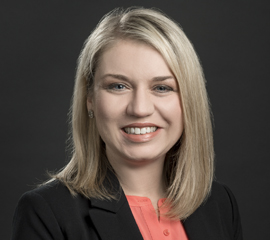
Kristin combines her medical and legal training to provide invaluable, passionate service to parents struggling to care for their birth-injured children.
Families often have questions as they go through the birth injury lawsuit process. Kristin diligently identifies and investigates all medical issues so the birth injury attorneys at Miller Weisbrod can answer those questions Kristin ensures that our birth injured children’s medical records are thoroughly reviewed and organized. Miller Weisbrod’s birth trauma litigation attorneys and medical experts retained by the firm need her services while pursuing justice for our clients.
Kelly Kunkel

Kelly Kunkel was born and raised in Dallas, Texas. She has 15 years’ experience in hospital based High Risk Obstetrics and Labor and Delivery bedside nursing care. Kelly graduated with an Associate’s Degree in Nursing from El Centro College in December of 1990 and received her Bachelor’s Degree in Nursing from West Texas A & M University in 2008; graduating with honors.
In addition, Kelly has over 25 years’ experience in medical malpractice case management and litigation and has worked with David Olesky for over 22 years. After many years of assisting in defending healthcare providers and hospital systems in medical malpractice cases involving complex litigation matters related to birth injury, catastrophic injury and death, Kelly has proudly joined David Olesky in the national birth injury and medical negligence practice at Miller Weisbrod Olesky.
Why Should You Talk with the Knowledgeable Attorneys at Miller Weisbrod Olesky?
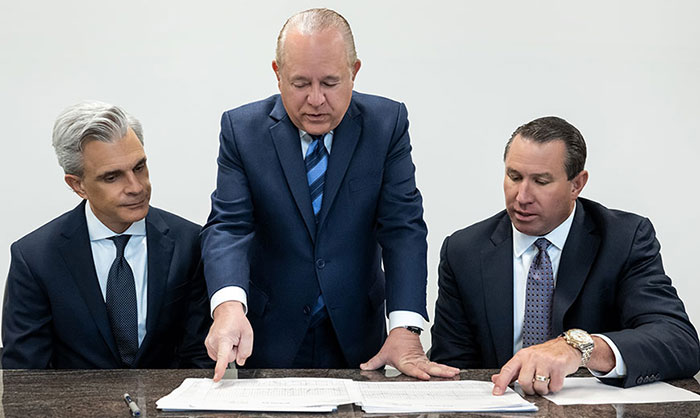
The only way to find out if you have a birth injury case is to talk to a medical negligence attorney who understands how ischemia occurs during labor and delivery, birth and shortly after birth if baby’s are not correctly monitored, diagnosed and treated.
At Miller Weisbrod Olesky, a team of committed attorneys, nurses and paraprofessionals uses our detailed medical negligence case review process to assess your potential claim. We start by learning more about you and your child and the status of meeting/missing developmental milestones. Then we gather medical records to determine what happened before, during, and after your delivery. We call in skilled medical experts who review your records and let us know if they think medical errors could have caused your child’s injuries.
If we feel medical negligence caused or contributed to your child’s injuries, we meet with you to discuss how you can receive compensation from the medical professionals who made the errors.
At no point in our legal intake process will we ask you to pay anything. The medical review of your case and the consultation are free. We only receive payment when you do.
Contact Our National Birth Injury Lawyers
Our Birth Injury Attorneys
Les Weisbrod
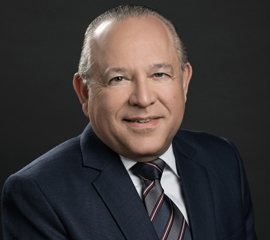
Les Weisbrod has been on the cutting edge of the national birth injury litigation scene for almost 40 years.
As a national birth injury attorney, Les has settled over 204 medical negligence cases for more than $1,000,000. He also obtained settlements in 75 birth injury cases for over $1,000,000 each.
His $31 million verdict against Baylor University Medical Center in Dallas was one of the top 100 verdicts in the United States that given year.
Les is recognized nationally and internationally as one of the top plaintiff’s medical malpractice trial lawyers in the United States. But the recoveries for the clients and the differences made in the lives of the children and families Les has represented tell only part of the story.
Les has worked with his law partner Clay Miller for years to build a one-of-a-kind law firm.
Miller Weisbrod Olesky provides unique and unparalleled services to families of birth-injured and brain-injured children from the moment the firm decides to take the case.
The registered nurses and registered nurse-attorneys on staff are valuable team members who assist Miller Weisbrod birth-injury clients. Les has designed a system where each birth injured child is assigned a nurse-attorney liaison to guide them through the process of medical treatment/evaluation, therapies, home assistance, and quality of life improvement.
Miller Weisbrod’s unmatched service allows families to better cope with the immediate challenges facing our young clients.
Birth-injured children and their families are Les and Miller Weisbrod’s priority.
Les and the attorneys at Miller Weisbrod fight for the justice their clients are entitled to under our nation’s system of justice.
This fighting spirit has taken Les across the United States to represent clients in birth injury and medical negligence cases. In fact, he has personally handled cases not only in Texas but also in Arkansas, Arizona, Colorado, Oklahoma, Louisiana, Utah, Iowa, Ohio, Oregon, Montana, Alabama, Georgia, Florida, and New York.
Les and Miller Weisbrod continue to expand their reach of helping brain-injured children to new states each year as we strive to bring a sense of justice to each affected family. And Les is not the only one who notices he fights for his clients.
Michael Rustad, a Professor of Law at Suffolk University Law School in Boston who has done extensive research on punitive damage awards, says,
“Les Weisbrod has obtained more medical malpractice punitive damage jury verdicts for his clients than any other attorney in the United States.”
Also, a well-known defense medical malpractice attorney dubbed Les Weisbrod the “pitbull” of the Texas medical malpractice bar in a media profile of Les published by a major newspaper.
Les shares his experience and knowledge to improve the representation of all birth-injured children and their families.
In the early 1990s, Les recognized that a more focused effort needed to be made to educate attorneys who handle birth injury cases. As a result, Les was the founding Co-Chair of the American Association for Justice (AAJ) Birth Trauma Litigation Group in 1991. He also was a founding Co-Chair of AAJ’s Medical Negligence Litigation Group in 1999 and served as Chair of AAJ’s Professional Negligence Section in 1996.
Combined, these groups have put on more than a hundred continuing education seminars across the United States. helping to educate other attorneys by bringing in world-renowned experts in the fields of:
- labor and delivery
- neonatal care
- the care and treatment of birth-injured children, including those suffering from cerebral palsy and hypoxic-ischemic encephalopathy (HIE)
Education and professional experiences back up his dedication to helping children and families harmed by medical malpractice.
Les received his B.A. magna cum laude in 1975 from Claremont Men’s College and his J.D. in 1978 from Southern Methodist University Law School.
He is Board Certified by the Texas Board of Legal Specialization in Personal Injury Trial Law and Civil Trial Law.
Les was a past president of the Dallas Trial Lawyers Association in 1993. He has been a member of the Texas Trial Lawyers Association Board of Directors since 1990.
His work with the American Association for Justice (AAJ) (formerly ATLA) includes serving as President, President-Elect, Vice President, Secretary, Treasurer, and Parliamentarian. Mr. Weisbrod has also served on the AAJ Board of Governors since 1998 and the 17-member Executive Committee of AAJ since 2001. In 1990, he was chosen as a Rising Star of the ATLA and presented a paper entitled “Dirt and Greed: A New Look at Medical Malpractice Cases.”
Les has written and lectured extensively on birth injury litigation, medical malpractice, and medical product topics.
Les is a contributing author to the 1996 text Operative Obstetrics published by Williams & Wilkins. He also co-authored the “Drugs & Medical Devices” chapter in AAJ’s Litigating Tort Cases.
He also has lectured to lawyer groups across the U.S., Canada, England, and Australia.
Education
- Southern Methodist University - School of Law, J.D. - Dallas, Texas, 1978
- Claremont Men's College - B.A. - Claremont, California, 1975
Areas of Practice
- Medical Malpractice
- Birth Injury/Birth Trauma
- Products Liability
- Personal Injury
Associations & Memberships
- State Bar of Texas
- National Association Of Distinguished Counsel
- Million Dollar Advocates Forum
- Multi-Million Dollar Advocates Forum
- American Association for Justice
- Texas Trial Lawyers Association
- Dallas Trial Lawyers Association
- Pan-European Organization of Personal Injury Lawyers
- American Society of Law and Medicine
- Consumer Attorneys of California
- Arkansas Trial Lawyers Association
- Louisiana Trial Lawyers Association
- Dallas and American Bar Associations
- ABOTA (American Board of Trial Advocates)
Clay Miller

Clay is Board Certified in Personal Injury Trial Law by the Texas Board of Legal Specialization. Clay has practiced solely in the field of catastrophic injury and wrongful death since graduating from law school. His practice has been limited to the representation of victims. Over the past twenty-four years, Clay has successfully settled or tried to verdict cases in the areas of vehicular negligence, medical malpractice, construction site accidents, workplace injury, premises liability, and commercial trucking and a nationwide business loss case (suits filed in a dozen different states) involving defective truck engines sold to trucking companies.
Clay represented dozens of trucking companies in lost profit and diminished value claims against Caterpillar in 2010 through 2012. These cases were filed in over a dozen states with the bellwhether trial set in Federal Court in Davenport, Iowa. After intense litigation and trial preparation, a global confidential settlement was reached for all the clients.
Clay's most recent 2017 victories are a $30,800,000 jury verdict in Tennessee arising from fraud claims in the sale of heavy-duty truck engines and a $26,500,000 jury verdict in a construction accident, obtained within 60 days of each other.
Clay was raised in Lewisville, Texas and completed his undergraduate degree in Finance at
Texas A & M University. Following graduation from Southern Methodist University School of law, Clay worked for two Dallas firms representing victims. In 1998, Clay began his own practice before forming his current partnership. In addition to his law practice, Clay has lectured at seminars and published in the areas of construction accidents, jury selection techniques, medical negligence, trucking accidents and settlement tactics.
He is active in local and statewide trial lawyers' associations including serving as the Chair of the Advocates for the Texas Trial Lawyers' Association in 2002 and remains on the Board of Directors. Clay served as President of the Dallas Trial Lawyers Association from 2008-2009. He has also been a member of the American Board of Trial Advocates (ABOTA) since 2014.
Education
- Southern Methodist University School of Law - Dallas, Texas
- Texas A&M University - Finance - College Station, Texas
Areas of Practice
Associations & Memberships
- State Bar of Texas
- State Bar of New Mexico
- State Bar of Colorado
- American Board of Trial Advocates (ABOTA)
- Texas Trial Lawyers Association
- Dallas Trial Lawyers’ Association
- American Association of Justice
David Olesky

David Olesky is Vice Chair of the Health Care Professional Liability practice. David is a trial lawyer focusing his practice on complex litigation matters that involve defending and protecting clients in all types of cases related to catastrophic injuries or death, but with a special focus on birth injury cases. David regularly advises his health care clients on the issues and challenges that they face on a daily basis. Clients repeatedly look to him for guidance to handle such high stakes cases and matters in Texas and jurisdictions outside of Texas.
David has earned the trust and reliance of clients he has worked with by consistently getting the results that matter most to them, whether that is a win at trial or a favorable outcome through alternative dispute resolution outside the courthouse. Through his representation, David demonstrates a true loyalty and hardworking commitment to the clients that he serves.
David believes the foundation of any client relationship is to act as a trusted advisor instead of simply as a litigator. Clients value his earnest representation of their business interests, accompanied by a devotion to understanding their businesses, prompt attention to their immediate needs and the challenges they face in their individual roles.
Education
- Southern Methodist University Dedman School of Law, J.D., 1992 - Dallas, Texas
- University of Texas, B.B.A, 1989 - Austin, Texas
Areas of Practice
Associations & Memberships
- American Bar Association
- Dallas Bar Association
- Dallas Bar Foundation Fellow
- Texas Bar Association
Alexandra V. Boone

Alexandra Boone is a partner in Miller Weisbrod. She concentrates her legal practice in the area of birth injury, medical malpractice and mass tort products liability. Alex currently works directly with firm partner Les Weisbrod in managing the birth injury docket and working with the firm’s highly qualified expert witnesses in the review of potential cases. Alex also litigates her own docket of medical negligence cases.
Over the course of her 17 years with the firm, Alex has focused on the administration and prosecution of mass tort litigation, originally focusing on occupational toxins, but more recently in the area of pharmaceuticals and medical devices. In the past, she has actively pursed cases involving hormone therapy, Vioxx, Fosamax, and Reglan. Alex was also instrumental in our firm successfully resolving thousands of cases transvaginal mesh, hip prosthetics, and the blood thinner Xarelto. She is actively prosecuting over 1,000 cases.
In addition to being a member of the Texas bar, she is also licensed in Oklahoma and is a member of the American Association of Justice, Texas Trial Lawyers Association, Oklahoma Association of Justice and the Dallas Trial Lawyers Association.
Education
- Baylor University - School of Law, 1996, J.D. - Waco, Texas
Areas of Practice
- Products Liability
- Mass Tort
Associations & Memberships
- State Bar of Texas
- American Association of Justice
- Texas Trial Lawyers Association
- Oklahoma Association of Justice
- Dallas Trial Lawyers Association
Pro Bono Activities
- East Texas Legal Services/Nix Law Firm Pro Bono Project, 1996 - 1997
Robert Wolf

Robert E. Wolf was born in Dallas, Texas and graduated Magna Cum Laude as a proud horned frog from Texas Christian University in 1997, with Bachelor of Science degree in Political Science and was inducted into Phi Beta Kappa and Mortar Board. He obtained his law degree from Southern Methodist University in 2000 while serving as an Articles Editor for the International Law Review and winning awards at Mock Trial and Appellate competitions.
Robert has been named a Thomson Reuters | Texas Super Lawyers Rising Star (less than 2.5% of attorneys in Texas receive this distinction) in 2011, 2012, 2013, 2014, and 2015. Further, Robert was recognized as a National Trial Lawyers Top 40 Under 40 attorney for Texas in 2012 (no more than 40 attorneys in Texas are eligible for this award annually).
Robert brought his passion for and over 14 years of experience of representing seriously injured individuals and their families to Miller Weisbrod in January 2015, and has concentrated his legal practice in the area of medical malpractice, products liability, and pharmaceutical/mass tort litigation. He is a member of the State Bar of Texas, American Association for Justice, Texas Trial Lawyers Association, and Dallas Trial Lawyers Association.
In addition to many successful jury verdicts and settlements across Texas, Oklahoma, Iowa, Wisconsin, and Idaho, Robert’s role as an attorney representing victims and their families has led to numerous changes to key safety practices and policies and procedures at corporations and medical facilities.
Robert and his wife Suzy also get plenty of exercise trying to keep up with their precious and very active daughter.
Education
- Southern Methodist University - Dedman School of Law, J.D. - 2000 - Dallas, Texas
- Texas Christian University - B.S. Political Science - 1997 - Fort Worth, Texas
Areas of Practice
- Medical Malpractice
- Personal Injury
- Products Liability
Associations & Memberships
- State Bar of Texas
- American Association of Justice
- Texas Trial Lawyers Association
- Dallas Trial Lawyers Association
Carrie Vine

Carrie Lynn Vine has over 15 years of experience in medical malpractice litigation, with a particular focus in representing children and families who have suffered birth injuries as a result of the negligence of either doctors, nurses or hospitals.
She is a passionate advocate for her clients and has handled hundreds of birth injury and birth trauma cases throughout the United States. As part of Carrie’s national birth injury legal practice, she has handled cases in Texas, Arkansas, California, Nevada, Kentucky, Georgia, Illinois, Wisconsin, Ohio, Pennsylvania, North Carolina, South Carolina, Florida, and North Dakota. She is determined to seek justice and works to obtain fair compensation for the children and families she represents.
Carrie earned her law degree from Northern Illinois University where she tutored other law students. Prior to law school, she received her undergraduate degree from the University of Notre Dame in Biomedical and Biological Science, and earned both a Master’s Degree and a Ph.D. from The Pennsylvania State University in Anthropological Genetics. She then conducted post-doctoral research at the University of Michigan Medical School before deciding to attend law school. She applies an academic mindset and love of science and medicine to mastering the medical principles and literature relevant to the cases she pursues.
Carrie is an active member of the American Association of Justice as well as the Birth Trauma Litigation Group (BLTG).
Education
- Northern Illinois University:
Law School
- University of Notre Dame:
Biomedical Science
- Pennsylvania State University:
Anthropological Genetics
Areas of Practice
- Birth Injury/Birth Trauma
- Medical Malpractice
Associations & Memberships
- American Association of Justice:
Member
- Birth Trauma Litigation Group:
Member
Larry Lassiter

Lawrence R. Lassiter is an AV-rated attorney with more than twenty years of experience in appellate and trial advocacy. He has been consulted by attorneys across the country to conduct research, evaluate cases, prepare appellate and trial briefs, and formulate litigation strategy. He has prepared hundreds of appellate briefs in federal and state appellate courts, including the highest courts of Texas, West Virginia, Georgia, Oklahoma, Ohio, Nebraska and Tennessee, and he is member of the Bar of the United States Supreme Court. Larry has a national appellate and legal briefing practice. Larry has filed extensive briefs and/or argued before either state or federal courts in 30 out of 50 states in his career.
Larry assists the Birth Injury team in all aspects of legal briefing. Unlike many other birth injury firms across the United States, Miller Weisbrod has an attorney dedicated to handling legal briefing on behalf of our clients across the country. Larry has handled extensive briefing in birth injury and other medical malpractice cases in Texas, New Mexico, Arkansas, Oklahoma, Iowa, Ohio, Alabama, Georgia, New York, Utah, Arizona, Louisiana and West Virginia.
Since joining Miller Weisbrod in 2010, Larry has won a number of important victories vindicating the rights of our clients in both state and federal appellate courts, including Vitacost.com, Inc. v. McCants, 210 So.3d 761 (Fla. Ct. App. 2017); TTHR Ltd. Partnership v. Moreno, 401 S.W.3d 41 (Tex. 2013); In re E.B., 729 S.E.2d 271 (W. Va. 2012); Mid-Continent Cas. Co. v. Davis, 683 F.3d 651 (5th Cir. 2012); Rouhani v. Morgan, 2017 WL 3526719 (Tex. App. – Houston [1st Dist.] 2017, no pet.); Mid-Continent Cas. Co. v. Andregg Contracting, Inc., 391 S.W.3d 573 (Tex. App. – Dallas 2012).
He was as a judicial clerk for the Honorable Harlington Wood Jr., Circuit Judge, United States Court of Appeals for the Seventh Circuit. Larry was a University of Iowa Presidential Scholar and served as Editor in Chief of the Iowa Law Review.
Larry is an active member of the American Association for Justice. He is a member of AAJ’s Birth Injury Litigation Group and Medical Negligence Sections.
Education
- University of Iowa - Political Science & History - B.A. - Iowa City, Iowa
- University of Iowa - School of Law - J.D. - Iowa City, Iowa
Areas of Practice
- Appellate Advocacy
- Medical Malpractice
- Pharmaceuticals & Medical Devices
- Products Liability
- Personal Injury
Associations & Memberships
- State Bar of Texas
- American Association of Justice
- Texas Trial Lawyers Association
- Dallas Trial Lawyers Association
Laurie Pierce
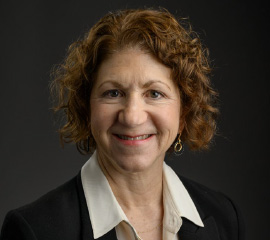
Laurie draws upon extensive experience in state and federal courts with a focus on complex claims involving medical malpractice cases. After many years of defending health care providers and hospital systems in medical malpractice cases, Laurie joined David Olesky in the national birth injury and medical negligence practice at Miller Weisbrod Olesky.
Laurie’s focus is to understand not only the facts and circumstances of the matter at hand, but to understand the specific needs and goals of the client and their unique business considerations. Her extensive background in commercial litigation provides a foundation that enhances her health care litigation practice. She works with clients that require more than a strong trial lawyer; they expect an attorney who understands the relationship between law and their specific business and who will work tirelessly to protect their rights, interests and bottom line.
Education
- Southern Methodist University:
Dedman School of Law - 1992
- Order of the Coif:
Journal of Air Law and Commerce, J.D. - 1992
- Miami University-Oxford, Ohio
B.S. Education - 1982
Areas of Practice
- Birth Injury/Birth Trauma
- Health Care Industry
- Health Care Litigation
- Litigation and Dispute Resolution
- Medical Malpractice
Associations & Memberships
- American Association for Justice
- American Bar Association
- Dallas Bar Association
- Dallas Bar Foundation Fellow
- Texas Bar Association
Distinctions
- Admitted to Pro Bono College of State Bar of Texas in 2019 for outstanding delivery of legal services to low-income Texans
Court Admissions
- United States Supreme Court
- U.S. District Court, Eastern District of Texas
- U.S. District Court, Northern District of Texas
- U.S. District Court, Southern District of Texas
- U.S. District Court, Western District of Texas
Linda Cuaderes

Linda Cuaderes is both a registered nurse and a licensed lawyer. Linda works exclusively in Miller Weisbrod’s Birth Injury and Medical Malpractice section. Linda acts as the firm’s patient advocate and liaison with our young clients and their parents.
Linda combines her legal and nursing experience along with her exceptional organizational talent and attention to detail to make sure each child we represent is provided the highest level of medical care and attendant care during the pendency of their case. Linda communicates with our parent clients regularly to monitor their birth injured child’s treatment, provide guidance as to additional care and therapies and when necessary assist them in obtaining specialized medical providers.
Linda was raised in Bartlesville, Oklahoma and completed her Bachelor of Science in Nursing with Honors at the University of Oklahoma. She started as an Oncology Nurse at Presbyterian Hospital in Oklahoma City, quickly becoming the Assistant Head Nurse of the Outpatient Endoscopy Unit. Linda then entered the University of Oklahoma College of Law.
Following graduation, Linda joined Les Weisbrod in the Medical Malpractice Section. After taking time off to raise her three lovely children, Linda returned to Miller Weisbrod and her passion of holding healthcare providers accountable for preventable errors. Linda is active in the American Association for Justice, Texas Trial Lawyers Association, Dallas Trial Lawyers Association, and the Texas Bar Association. Linda is an active member of the Birth Trauma Litigation Group and Medical Negligence Section of the American Association for Justice.
She is admitted to practice before the Texas Supreme Court and routinely works on cases pending throughout the United States. Linda has worked with child victims of birth injury, their parents and other victims of medical malpractice in Texas, New Mexico, Oklahoma, Arkansas, Louisiana, Iowa, Ohio, New York, Alabama, Georgia, Arizona, Utah and Missouri.
Education
- University of Oklahoma - School of Law, 1990, J.D. - Norman, Oklahoma
- University of Oklahoma - School of Nursing, 1985 - Norman, Oklahoma
Areas of Practice
- Medical Malpractice
- Birth Injury/Birth Trauma
Associations & Memberships
- Texas Bar Association
- American Association of Justice
- Texas Trial Lawyers Association
- Dallas Trial Lawyers Association
Kristin Jones

Kristin combines her medical and legal training to provide invaluable, passionate service to parents struggling to care for their birth-injured children. Families often have questions as they go through the birth injury lawsuit process. Kristin diligently identifies and investigates all medical issues so the birth injury attorneys at Miller Weisbrod can answer those questions. Kristin ensures that our birth injured children’s medical records are thoroughly reviewed and organized. Miller Weisbrod’s birth trauma litigation attorneys and medical experts retained by the firm need her services while pursuing justice for our clients.
Education
- SMU Dedman School of Law - Dallas, Texas
- University of Texas at Arlington - Arlington, Texas
Areas of Practice
- Medical Malpractice
- Birth Injury/Birth Trauma
Associations & Memberships
- State Bar of Texas
- American Association of Justice
- Texas Trial Lawyers Association
Matt Adair

Matt Adair is an attorney specializing in medical malpractice, products liability, and pharmaceutical litigation. He received his bachelor’s degree in Philosophy from the University of Notre Dame. During his time there, he studied abroad at the New College at Oxford University in Oxford, England.
Matt is a member of the State Bar of Texas, American Association for Justice, Texas Trial Lawyers Association, and Dallas Trial Lawyers Association.
Education
- University of Notre Dame - Philosophy, B.A. 2012 - Notre Dame, Indiana
- Baylor University - School of Law J.D. 2015 - Waco, Texas
Areas of Practice
- Medical Malpractice
- Products Liability
- Pharmaceutical Litigation
Associations & Memberships
- State Bar of Texas
- American Association of Justice
- Texas Trial Lawyers Association
- Dallas Trial Lawyers Association
Garrett Stanford

Garrett Stanford was born in Dallas, Texas and graduated from Southern Methodist University in 2017 with a B.A. in Political Science. After graduation, he attended Baylor University School of Law. During his time at Baylor, he was a member of the Order of the Barristers and he won the Judge W.C. Davis Endowed Criminal Practice Professional Track Award. He obtained his law degree and license to practice law in 2020.
Garrett joined Miller Weisbrod in August 2021. His legal practice is concentrated in the area of birth injury and medical malpractice. Garret is actively involved in handling birth injury and medical malpractice cases in Texas, Ohio, Utah, Arkansas and Oklahoma.
Education
- Southern Methodist University - Political Science, B.S. - Dallas, Texas
- University of Baylor - School of Law, J.D. - Waco, Texas
Areas of Practice
- Medical Malpractice
- Birth Injury/Birth Trauma
Associations & Memberships
- State Bar of Texas
